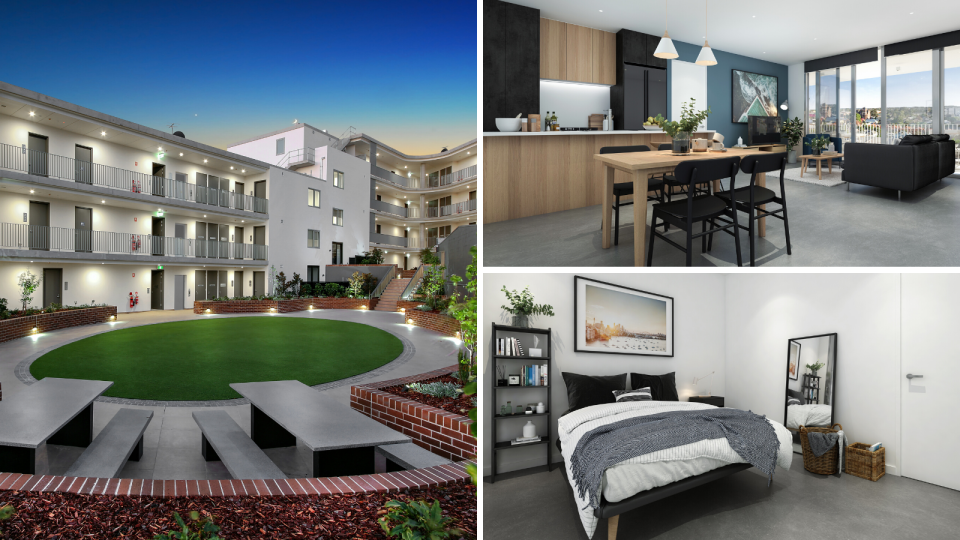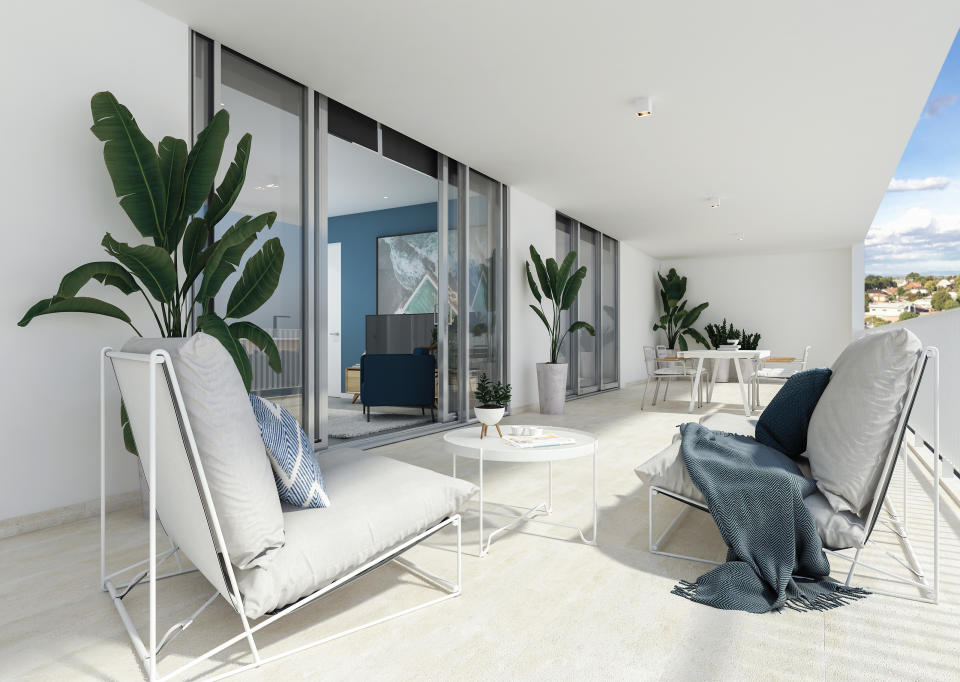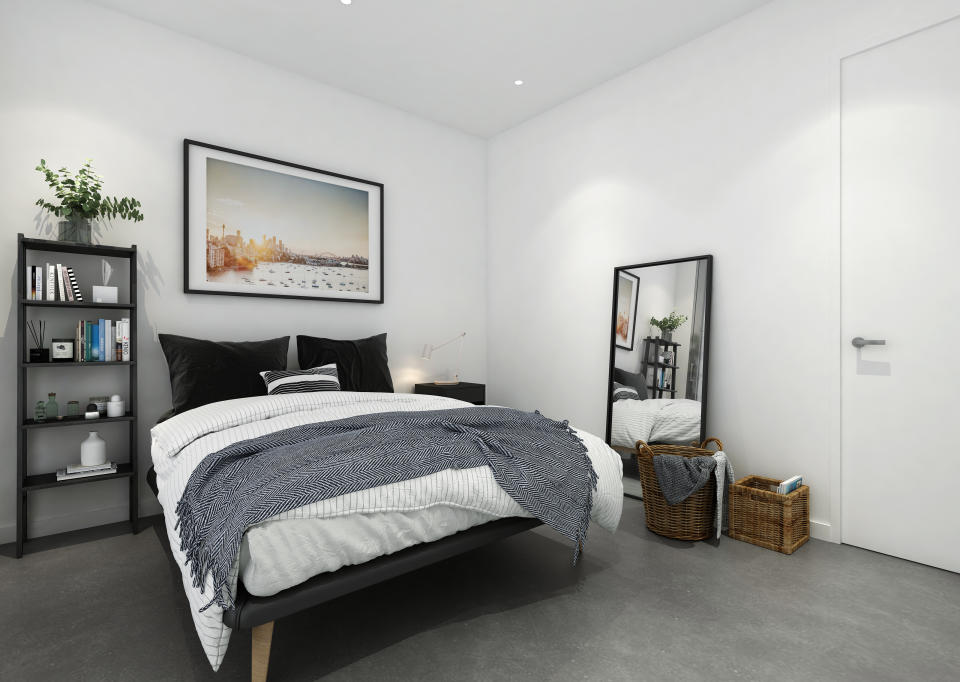Inside the co-living building that brings best of Airbnb to long-term residents

If you’re a renter, just the thought of moving into a new place provokes exhaustion.
The whole process involves looking for a place that you like, inspecting it, scoping out potential flatmates, putting in an application, and crossing your fingers that you’ll get it. Then there are referrals.
Eventually, you actually have to move in, and start thinking about furnishing, which is a headache and a hit to the wallet. And then, over the next six weeks, you have to make sure there’s someone home during the day to have the telco install the internet.
Related story: 10 regional property hotspots set to boom
Related story: Step-by-step guide for first home buyers: How to purchase your first property
Related story: Now's the time to negotiate: 4 ways to get yourself cheaper rent
Hmlet, a Singapore-based co-living company that has opened nine properties across high-demand Sydney suburbs such as Bondi, Newtown and Paddington in as many months, wants to streamline what Australian managing director Chrystan Paul calls a “frustrating, fragmented, disconnected process”.
Convenience and community
When you move into a Hmlet property, it comes fully-furnished. Gas, water, and electricity bills are included, and wifi is ubiquitous.
The lease period can be as short as three months, making Hmlet properties particularly attractive to not only locals with itchy feet, but also interstate workers and expats.
Shared spaces, such as Hmlet St Peters’ spacious green courtyard with plushy armchairs, are designed for community events and activities in mind, from yoga to Christmas parties to summer open air cinemas.

“You could land in Sydney on Monday morning, you could call us by 12 o'clock, you could have a [property] viewing by three o'clock and you can move in by six o'clock,” said Paul.
“In terms of furnishing and connectivity, everything's there.”

Only one month ago, Hmlet opened its doors to its latest 82-room property in St Peters. In a matter of weeks, the property is nearly at 50 per cent capacity.
According to Paul, this demand for a co-living has been the drive behind Hmlet’s rapid expansion across Sydney.
“Individuals want a community they can move straight into,” he said.
The very first apartment that got filled at Hmlet St Peters were of four individuals from different Australian capital cities that didn’t know each other, attracted to Hmlet’s focus on creating a community.
The shorter leases, the superior locations and the nearby lifestyle and transport amenities are what draw people in, Paul said. Hmlet St Peters is a five-minute walk from the train station and an 11-minute train ride from Town Hall.
“They’re moving in for the convenience. But what they’re really staying for is the community.”
All bills included – and then some
The 82-bed property offers a choice of five room types that range from one-bedroom to four-bedroom apartments.
When you make an enquiry to Hmlet, a community manager works with you to understand what you want and works backwards from there to fit you with the best room, whether you want a one-bedroom unit to yourself, or an ensuite in an apartment shared with three others.

Prices are slightly more expensive than the local market, starting from $370 a week for its smallest ‘pocket room’ option – a single bed with a shared bathroom – and stretches up to $800 a week for a full one-bedroom apartment.
The average rent in St Peters hovers around $650 a week, according to data from realestate.com.au’s suburb profile.
But Hmlet’s heftier price tag covers all your bills, and also includes a cleaner that comes around once a week. The upside is that you simply don’t have to think about furnishing the place or of white goods: brand-new furniture comes with the package.

What you’re paying for is the convenience of it all and the community that is being specifically tailored to members’ tastes. Every Hmlet is treated as entirely different, and the community managers will organise events and activities based on what members want.
And what of Australian renters and owners who are rightly concerned about the poor quality of new apartments, where shortcuts taken in the building process have left Opal Tower and Mascot Tower owners and tenants out to dry?
“[Hmlet] will take care of the maintenance for you,” said Hmlet co-founder and chief Yoan Kamalski. Any structural issues that aren’t the fault of members will be sorted out in conjunction with Hmlet’s real estate partner.
Lack of affordability an ‘opportunity’
Hmlet has conducted its own research on how renters feel about Sydney’s property market. Unsurprisingly, two-thirds of Australians find Sydney property unaffordable and lacking in variety.
“For us, that’s perfect,” said Paul.
“That’s the perfect ingredient for us to come in and create a disruptive product that changes the way people live.”
In the next five years, Australia will have 7 million millennials – and Hmlet wants to have a slice of that market.
“If we can capture even 5 per cent of that, that's a massive market for us – [that’s] 350,000 people. And if we can cater to them in different parts of the country in different properties, it just shows that we've kind of created the sector,” said Paul.
After all, the idea of co-living is not new; we’ve already been doing it.
“But it's just been done in a very kind of unorganised kind of traditional way.
“We're really bringing pieces together that already exists.”
Make your money work with Yahoo Finance’s daily newsletter. Sign up here and stay on top of the latest money, news and tech news.

 Yahoo Finance
Yahoo Finance 
